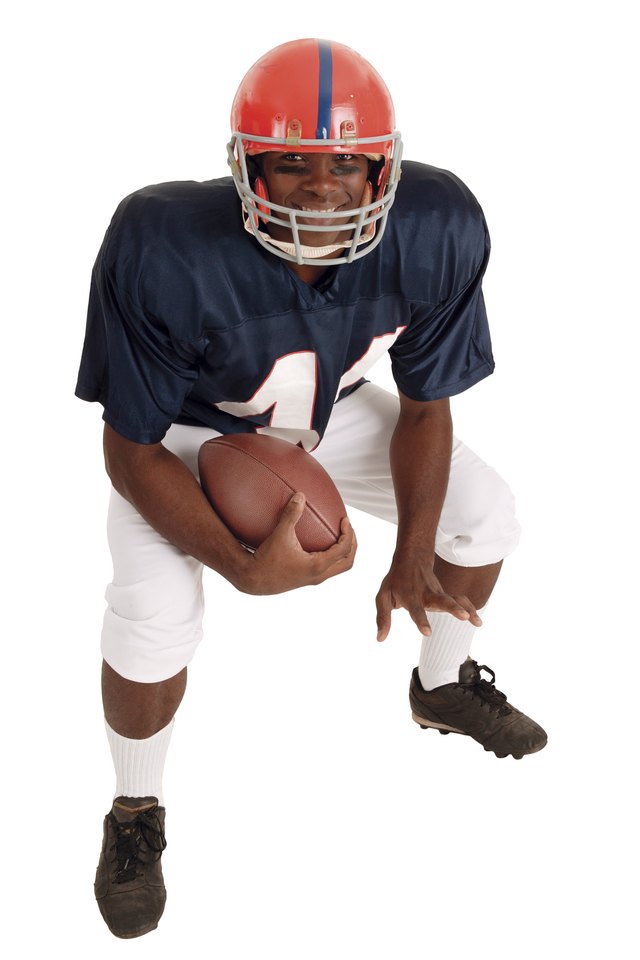More Articles
How to Become a Better Fullback in Football

A fullback is a vital part of any football team's offense. A fullback's main goal is to block for the speedy running back. A normal fullback is around 6-foot to 6-foot-2 and weighs about 250 pounds, so he often is used in short-yardage situations to pick up key first downs. Fullbacks also can be used to catch short passes out of the backfield.
Be aggressive. As a fullback, you normally will be called on to block for the running back or quarterback. This means you could have 300-pound defensive linemen or 240-pound linebackers coming at you full speed. If you slow down in preparation for contact with a defender, your chances of being knocked down increase. Even if you alter a defender's route by a half second, it can be the difference between the quarterback getting rid of the ball or a sack.
Develop lower body strength. While upper body strength is a big plus for a fullback, lower body strength will help you pick up that extra yard in short-yardage situations. Squats are a good way to develop lower body strength. Dumbbell step-ups are another great exercise. With a dumbbell in each hand, find a one-meter high bench and step up with your right leg. Push your entire body up on the bench with your right leg while raising the weights straight up. Return to the ground and do the same with the left leg.
Improve explosiveness and acceleration. A good fullback needs to be explosive and have quick acceleration to lead the running back into the open gaps to block any remaining defenders. Likewise, on sweeps or runs to the outside, a fullback must lead the running back and not slow him down as he attempts to turn the corner.. Running stairs will help a fullback gain the necessary speed and quickness.
Practice carrying and catching the ball. In certain situations, a fullback may be called upon to run or catch the ball. Since these situations may be few and far between, you want to make the most of them. Practice carrying and catching the football, especially carrying. Fumbling the football when you rarely get to carry it is a good way to see your carries go down even more. When you are about to get hit, hold the football across your chest as if you were holding a baby. This will give you a good grip on the ball and limit the possibility for a fumble.
References
Writer Bio
Thomas Mitsos covers high school sports as the central desk reporter for MLive Media Group, where he has worked since 2009. He has also contributed to "Grand Rapids Magazine" and "Grand Rapids Family." Mitsos holds a B.A. in professional writing from Grand Valley State University.
